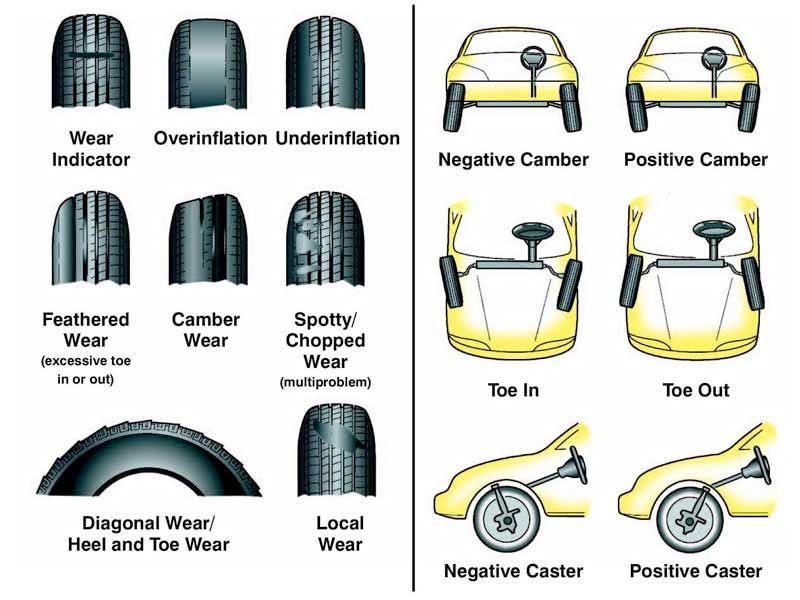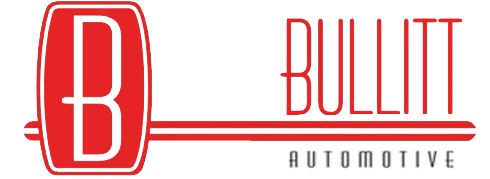Wheel Alignment Symptoms And Solutions
FEBRUARY 16, 2016

Bad Wheel Alignment Symptoms & Solutions
How do driving conditions affect my vehicle’s wheel alignment and what are bad wheel alignment symptoms?
Bad driving conditions such as poorly maintained roads, streets full of potholes, and hitting debris on the freeway can all greatly affect your alignment. Even the slightest change in the angle of your tires’ alignment can wear out tires or cause uneven tire wear.
This is why it’s important to have your alignment inspected about every 6,000 miles. This will ensure your money and your tires go further find more.
How will a wheel alignment help my vehicle?
Wheel alignments are essential for optimal drivability. Getting regular alignment checks ensure your tires last longer and your vehicle steers properly, and most importantly, it keeps all your wheels smoothly rolling in the right direction. And when your vehicle drives more smoothly, it can also boost its fuel efficiency.
The original manufacturers positioned your tires at special and exact angles before rolling them off the assembly line. To make sure your vehicle travels the way it was originally intended to, it needs a precise alignment. Wheels that are not aligned according to the manufacturer’s specifications can lead to poor steering, uneven tire wear, and reduced tire longevity.
Tires can be costly to replace. Thankfully, tire alignments are not!
Are there any warning lights that indicate an alignment problem?
Unfortunately, there are no warning lights that can tell you when your wheels are not aligned. Getting regular alignment checks are the only way to know if your tires need an adjustment.
What does tire wear mean to my car’s alignment?
Keeping your tires properly aligned is the easiest way to make them last longer. In a perfect world, tires would wear evenly across the tread. But if you notice excessive or lopsided wear on your wheels, you may need an alignment check. When your tires are not pointing the right direction, they not only wear down faster but they also use more gas to power, resulting in higher costs at the pump.
Did you know? Improper alignment can drastically reduce a tire’s lifespan by thousands of miles and compromise other parts necessary for steering and suspension. These can be expensive to replace. Save the money you would spend on replacement parts and worn out tires and get your alignment checked with every other oil change – or when you see early signs of uneven or premature tire wear.

How can I tell if my car’s alignment is off?
Since there are no warning lights or indicators on cars to let you know your alignment is off, you have to rely on your regular human senses. And although we cannot detect minor changes in the angles of tires, there are some noticeable signs of misalignment. Here are some of the more common wheel alignment symptoms that your vehicle’s wheel alignment is off:
- Pulling/drifting to the right or left
- Crooked steering wheel while driving straight
- Uneven or quick tire wear
- Tires that squeal
Have you noticed these alignment issues? Schedule an alignment check to get pointed in the right direction.
Quick Tip:
Misaligned tires can be a subtle problem and difficult to detect on your own. If you are having trouble determining whether your current alignment is correct, please call our shop today. We have advanced equipment and experienced technicians who can check your tire alignment with precision and accuracy.
What are some misalignment issues I can remedy myself?
Wheels lose their alignment naturally over time, but there are steps you can take to preserve your tires, suspension, and steering systems by remedying alignment issues before they become big problems. Even if there are no signs or symptoms of misaligned wheels, these helpful tips can help preserve the correct wheel alignment symptoms in your vehicle.
To remedy alignment issues:
- Empty the trunk or bed of your vehicle when not transporting heavy materials or equipment because the added weight strains the suspension system and lowers your vehicle height, leading to alignment problems.
- Drive conservatively to reduce strain on suspension and steering parts/systems
- Maintain proper air pressure in all tires
Other wheel alignment symptoms are:
- Steering wheel shakes and pulls.
- Does your vehicle pull to the right or left while driving?
- Are you replacing tires too frequently?
- Have you noticed your steering wheel is crooked even when you’re driving straight?
These are all the tell-tale signs of wheels that are not aligned. Wheels that are not in alignment result in uneven or rapid tire wear, reduced vehicle performance, and even less fuel efficiency.
Wheel alignment issues often result from:
- Accidents
- Poorly maintained roads / potholes
- Hitting curbs or cement dividers
- Ordinary wear and tear
Now you know what your wheel alignment symptoms are why not schedule your wheel alignment service today and let our experienced technicians properly measure and correct any misalignment. Driving is hazardous enough without the additional struggle of a crooked steering wheel or a car that pulls in one direction. Waiting too long will only result in extra money spent on tire replacement and high costs at the pump. Avoid these problems by addressing alignment issues early, at the first signs of uneven tire wear or other symptoms. Contact us today to check your vehicle’s alignment and save yourself the hassle!
More information on wheel alignment
More Services we offer:
Loading ...
Missing business hours data / Error occurred while getting the data.
Our Location
Have Trouble Finding Us?
Loading ...
Missing nap lines data / Error occured while getting the data.
